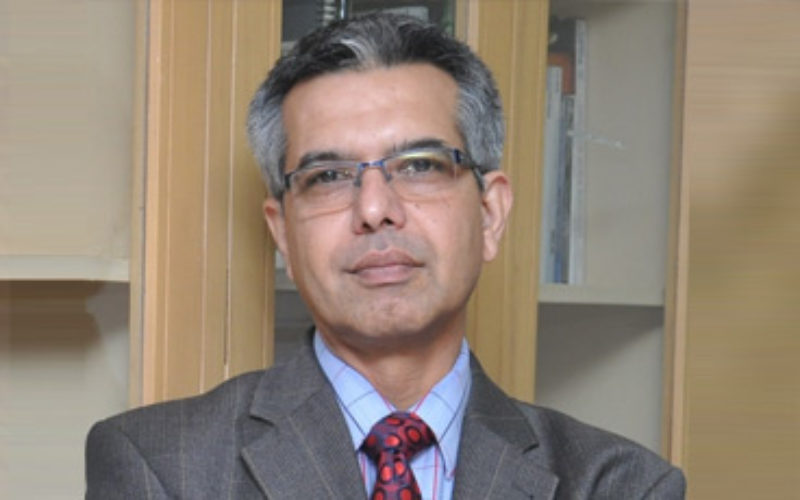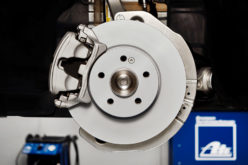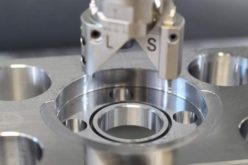Vinnie Mehta, Director General, Automotive Component Manufacturers Association of India (ACMA)

Overview
-
Conclusion:
In the FY 2014-15, the Indian auto component industry grew by 11% - its highest in last four years, registering a turnover of Rs 2.34 lakh crore (USD 38.5 billion) compared to Rs 2.11 lakh crore (USD 35.13 billion) in 2013-14 with a healthy CAGR of 11% during 2010-15. The growth was led by rising consumption by the domestic OEMS as well as that from exports, especially to the Europe, Asia and the US.
Tell us about the various initiatives taken by ACMA to uplift SMEs in the auto component industry?
The auto component industry in India is largely dominated by the Small & Medium Enterprises (SMEs), infact 70% of the ACMA membership consists of SMEs.
The single biggest challenge faced by SMEs in India is limited access to capital. Further, being small in scale, SMEs have limited access to technology as also are limited in their capacity to absorb technology. That apart they are unable to attract skilled labour and have challenges of retaining labour as well.
ACMA signed an MoU with Small Industries Development Bank of India (SIDBI) in order to support the MSME members of ACMA for availing credit at Reduced Rate of Interest. A SIDBI official visits the ACMA Head office once a week and advises the industry on the various available schemes as also assists them in documentation.
To upgrade the SMEs the ACMA Centre for Technology (ACT), technical wing of ACMA, over the last decade has helped upgrade process technology within the membership in over 550 plants across the country and has made them world-class. Today, ACT runs several cluster programs such as the Foundation, Basic, Advanced, Engineering Cluster programs and New Product Development Cluster. ACT also runs special cluster program for the SMEs viz. ACT MSME Lean Cluster and ACT MSME Advance Cluster. Each cluster program has a distinct road map where best practices are imparted right from the shop-floor to the top management.
Further, to help upgrade the capabilities of Tier2s and 3s, ACMA has launched the ACMA-UNIDO cluster program with support of the Department of Heavy Industry, Government of India. I am glad that over a 100 small and medium auto component manufacturers are taking advantage of this program. We intend to scale up this program rapidly so that many more can benefit.
What’s the market size of Indian auto component industry and at what % is it growing?
In the FY 2014-15, the Indian auto component industry grew by 11% – its highest in last four years, registering a turnover of Rs 2.34 lakh crore (USD 38.5 billion) compared to Rs 2.11 lakh crore (USD 35.13 billion) in 2013-14 with a healthy CAGR of 11% during 2010-15. The growth was led by rising consumption by the domestic OEMS as well as that from exports, especially to the Europe, Asia and the US.
During the last fiscal 2013-14, several macro headwinds stymied the growth of the industry including flagging vehicle sales, high interest rates and slowing down of investments in manufacturing. The industry’s focus on exports, quality and various cost saving initiatives helped it weather the weak business environment eventually leading to a double-digit growth in 2014-15.
It is interesting to note, in a period when the overall exports of India declined by 1.2%, the Indian auto component industry remained on the sunny side registering a growth of 11.4% to Rs 68,500 crore in 2014-15 from Rs 61,400 crore during 2013-14, posting a CAGR of 29% in last six years. ACMA has played a pivotal role in supporting its members in export development and in discovering new market opportunities; currently the industry exports to more than 160 countries, which have been growing at 15% per annum. The consistent growth in auto component exports is a clear indication of the growing credibility of ‘India made’ components in the global auto supply chain.
There are reports about some traction in the Indian automotive industry in the recent times. If it’s true, what are the factors contributing towards the same?
While the growth in the automotive sector globally is gradually returning, there were also some early signs of recovery in India. Further, with the Government of India initiating reforms and with return of growth to Indian economy, the prospects of the automotive industry have also brightened. According to SIAM, the body of vehicle manufacturers in India, the total production of automobiles, including passenger vehicles, commercial vehicles, two wheelers and three wheelers, increased by 8.6% from 21.5 million units in 2013-14 to 23.3 million units in 2014-15.
The vehicle density in India is only about 17 per thousand, which is indeed very far from saturation. It is the ambition of our youth that will drive vehicle consumption in the country.
Please provide some data about import and export of auto component from the country?
- Exports: Exports of auto components grew by 11.4% to Rs 68,500 crore (USD 11.2 billion) from Rs 61,400 crore (USD 10.2 billion) in 2013-14, registering a CAGR of 29% in the last six years. Europe accounted for 36.9% of exports followed by Asia at 25.2% and North America at 23.2%. Exports to Africa, Latin America and North America increased by 12.6%, 4.6% and 18.9% respectively, over the previous fiscal. The key export items include engine parts, transmission parts, brake system & components, body parts, exhaust systems, turbochargers etc
- Imports: Imports of auto components grew by 7.5% to Rs 82,900 crore (USD 13.58 billion) in 2014-15 from Rs 77,160 crore (USD 12.8 billion) in 2013-14; Asia and Europe contributed to 57.9% and 32.4% of the imports respectively. Asia and Europe contributed to maximum imports followed by North America and Latin America.
India is home to several automotive giants, do you think the Indian equipment, component or service providers to automotive industry are capable to meet their requirements?
Yes indeed, the auto components industry in India is pretty much delivering to the requirement of the vehicle manufacturers; it must be admitted that the vehicle manufacturers have played a significant role in handholding the component manufacturers; the average location in the vehicle industry is today 70%, while in some cases it is over 90%.
What are the initiatives taken by the Government of India to propel the auto component industry?
The automotive and the auto component industry continue to enjoy favourable policy environment. The auto policy 2002 and the Automotive Mission Plan 2016 are the key guiding documents out of which most policies of the sector are derived. The Automotive Mission Plan is now being revisited with an industry roadmap until 2026 delineating the kind of policy environment requited to meet the industry targets for 2026.
The auto component sector is completely deregulated, does not require any licence for operation; 100% FDI is permitted in the sector and customs tariffs are favourable, they comparable with those in the ASEAN region. Under the current Foreign Trade policy, 172 auto component tariff lines have been incentivised to promote component exports.
Your views about the ‘Make in India’ campaign…
The ‘Make in India’ campaign by the government of India has indeed enthused the manufacturing industry, not only in India but also globally; it has also been able to reinstate investors’ confidence. Several of the leading global automotive players have declared deepening of their engagement with India and making it their manufacturing hub. Further, it is expected that the reform agenda of the Government will lead to key positive results and create significant growth opportunities for the manufacturing industry.
ACMA has predicted that the Indian auto component industry will scale $100 billion. What are the factors that will drive the demand for auto component?
The key drivers for component consumption will be return of growth in the vehicle industry as a result of which the consumption of components by the vehicle manufacturers will enhance. That apart, with growth in vehicle parc, the replacement market will also get a boost. Further, the growing credibility of ‘made in India’ auto components is helping component exports significantly. Exports are growing at a CAGR of 29% over the last six years.
Now, with the thrust being given to manufacturing by the Indian Government, especially with the launch of the ‘Make in India’ campaign, we are confident that the component industry will be USD 100 billion by 2020, where exports will increase to USD 35 to 40 billion and revenue from overseas assets of the component sector will increase to USD 20 to 22 billion.










